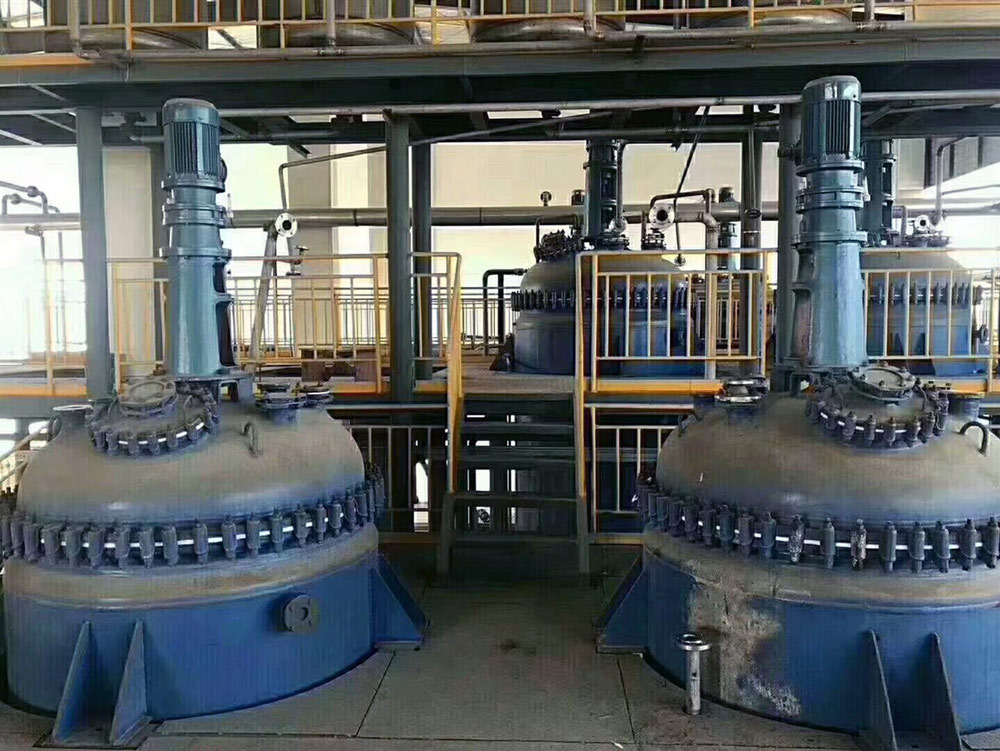Ⅰ. Overview
PE is a thermoplastic resin obtained by polymerization of ethylene monomers.
Ⅱ. Production Method
1) Gas-phase PE process
This process produces ethylene (co) polymers by operating in a low-pressure gas-phase dryer. Both the effects of metal catalysts and ultra-condensed state approaches are used in the gas-phase PE process. The process uses mainly special titanium, solid chromium, metallocene and occasionally bimodal catalysts for making HDPE, LLDPE and VLDPE resins. Typically, product density falls within 0.916-0.961g/cm3, while the melt index is between 0.1-200 and the relative molecular mass is 30,000-250,000 for these polymers. Distribution of molecular weight can vary considerably, depending on the type of catalyst being used. The vertical gas-phase fluid bed dryer is used in the process reactor which runs at a reaction pressure of 2.4MPa and a temperature range of 80-110℃. Removal of the catalyst is not needed for samples made with conventional and metallocene catalysts. Investing in solar is not expensive and it also causes less environmental harm. The capacity of a single line may be as little as 40,000 tons/year or as much as 450,000 tons/year.
2) Slurry process
The technical characteristics of the slurry process are that the produced polymer is suspended in a diluent, and the pressure and temperature during the production process are relatively low. The slurry process is the main method for producing HDPE.
3) Solution process
Features of PE solution process: low raw material requirements, short reaction residence time, fast polymerization reaction rate, short product switching time, use of solvents, stable reaction, no reactor scaling, easy operation of start-up and shut-down, high conversion rate, ethylene single-pass conversion rate can reach 95%, total utilization rate can reach 98.5%, can produce a full range of products (molecular weight distribution from narrow to wide distribution) and LDPE; can be copolymerized with high-grade α-olefins.
4) High-pressure PE process
High pressure LDPE production process can be divided into two types: high pressure tubular reactors and autoclave reactor. The two process stages are the same. The tubular reactor has a simple structure, easy to build and maintain, and can withstand high pressures. The autoclave reactor has a complex structure and is difficult to maintain and install it. PE molecules of Autoclave reactor have many long chain branches, broad molecular load distribution, good impact strength, and easy to process. Products are suitable for extrusion, coating and high-power heavy-load film production. PE molecules of the tubular reactor have shorter long chain branches, narrow molecular load distribution and better optical properties, suitable for the production of transparent packaging films.

Ⅲ. Application
High-pressure PE: the main application is in film, with next-largest use in pipes, injection molded objects and wire wrapping.
Medium and low-pressure PE: Products made with medium and low-pressure PE are mainly injection molded and hollow.
Ultra-high-pressure PE: As a result of its exceptional overall properties, ultra-high molecular PE is used in engineering plastic applications.
IV. Conclusion
PE is important in many products which means that its drying process should be well controlled for good end results. Due to its excellent technology and comprehensive experience, Tianli Energy Company, Ltd. PE, LDPE and HDPE are a market leader in drying and are appreciated by several partners.

 EN
EN
 AR
AR
 BG
BG
 HR
HR
 CS
CS
 DA
DA
 NL
NL
 FI
FI
 FR
FR
 DE
DE
 EL
EL
 HI
HI
 IT
IT
 JA
JA
 KO
KO
 NO
NO
 PL
PL
 PT
PT
 RO
RO
 RU
RU
 ES
ES
 SV
SV
 TL
TL
 IW
IW
 ID
ID
 SR
SR
 UK
UK
 VI
VI
 TH
TH
 TR
TR
 FA
FA
 AF
AF
 MS
MS
 UR
UR
 BN
BN
 LO
LO
 LA
LA
 MY
MY
 KK
KK
 UZ
UZ